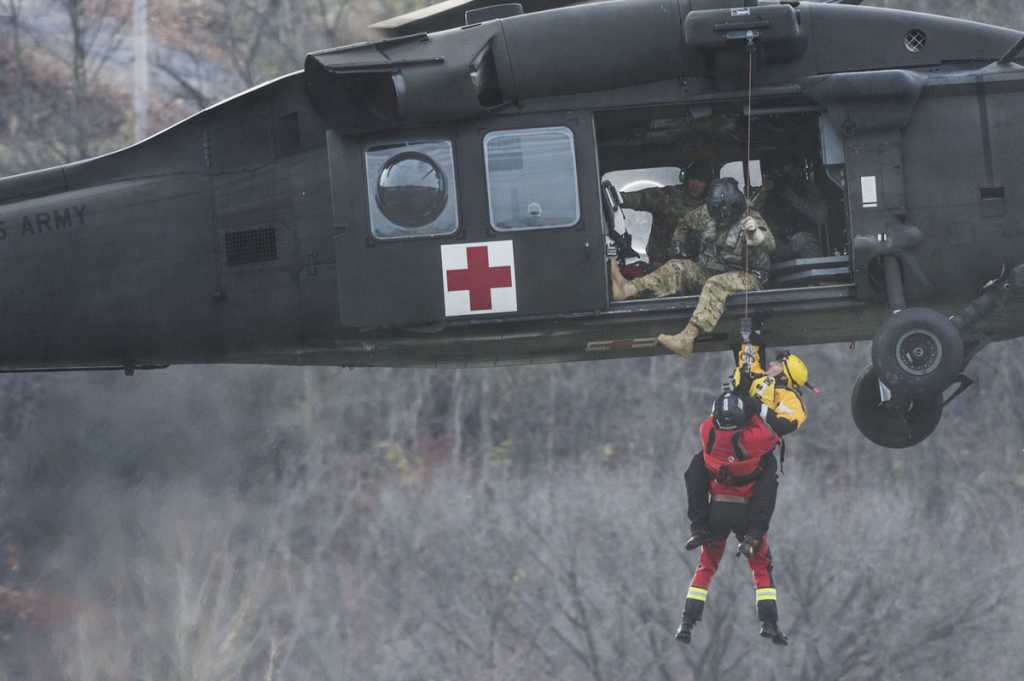Photo by Craig Hudson | Gazette-Mail – Military personnel hoist up a trainee who was “rescued” from the water during a training exercise for the newly formed West Virginia Swift Water Rescue Team.
By Max Garland Staff writer for WV Gazette Mail | Posted: Dec. 2, 2017 | Source: WV Gazette Mail
When Kevin Clendenin first trained for swift water rescue operations more than two decades ago, he didn’t expect he’d be training one day with West Virginia National Guard members, let alone using their helicopters.
But circumstances changed quickly following the deadly June 2016 flood that devastated much of West Virginia.
“The floods in 2016, with many losing their lives, that’s what sparked this joint enterprise,” said Clendenin, now chief of the Clendenin Volunteer Fire Department.
That enterprise, the West Virginia Swift Water Rescue Team, conducted swift water training exercises for most of Saturday in Dunbar on the Kanawha River. The recently formed team is comprised of West Virginia Army National Guard soldiers and members of the Glasgow and Clendenin volunteer fire departments, totaling around 50 people.
Maj. Gen. James A. Hoyer, adjutant General for the West Virginia National Guard, said soldiers were able to support first responders during the flood in high water situations but didn’t have the proper training for swift water operations, or rescuing people in whitewater river conditions. Navigating and saving people in such conditions is a much more dangerous venture than saving people in high-water situations, Hoyer said.
“Now we’re training our guardsmen to support our civilian first responders in the swift water side of things,” Hoyer said. “We’re fortunate to work with the Clendenin and Glasgow [fire departments] who have done this work for a number of years.”
Throughout the day, the fire departments trained the state’s National Guard to meet their swift water rescue standards, and then the team worked on FEMA-level training together to be ready to provide support in natural disaster situations across the country, Hoyer said.
Specific training activities included getting acclimated with boat rescue equipment and pulling a person out of the water for medical evacuation by a helicopter, said National Guard Major Wally Hatfield.








